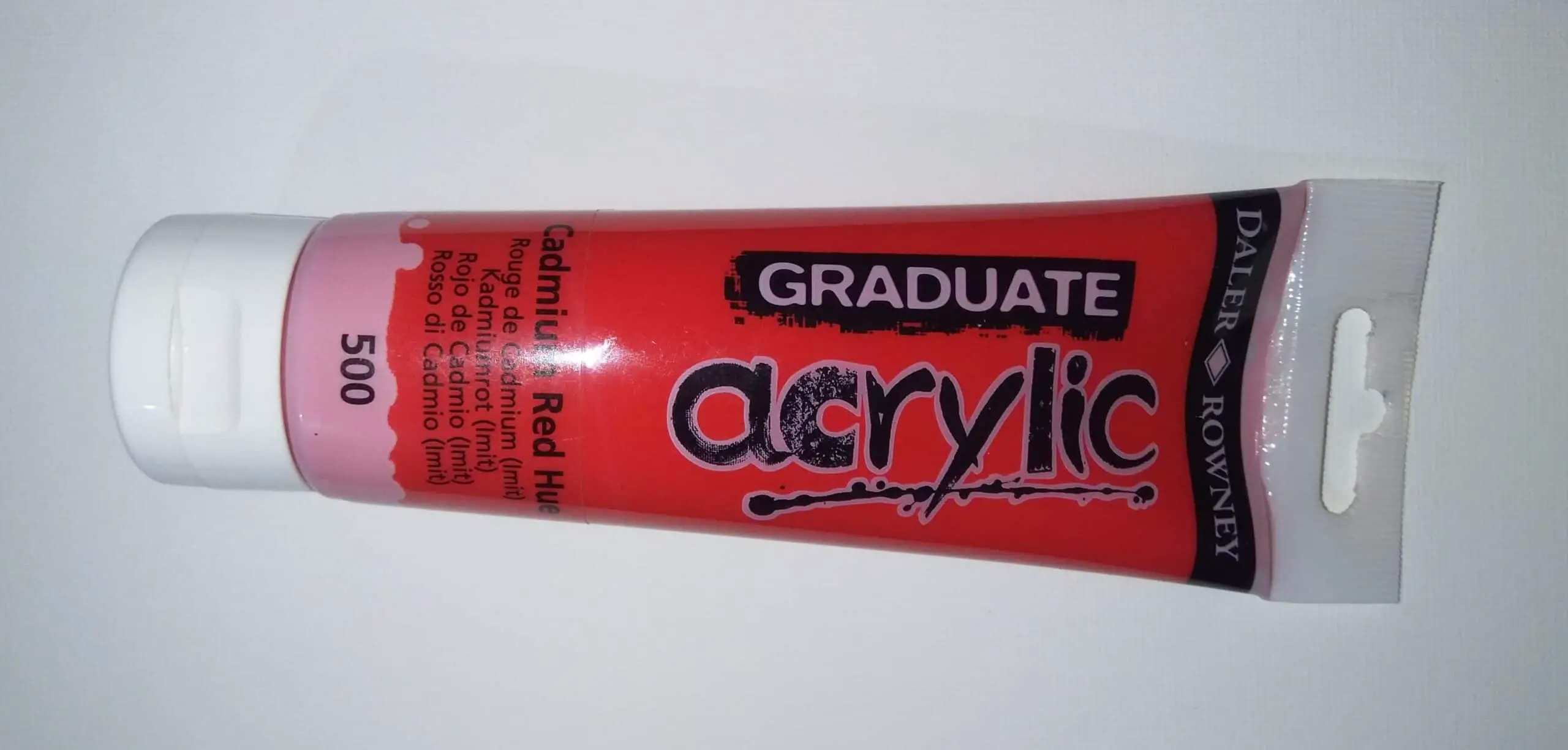Graduate acrylics from Daler and Rowney are made for amateurs and students who want to get a feel for good acrylic paint. I thought of getting Daler and Rowney Graduate acrylic paint and checking if it is a really good paint for beginners or just a waste.
Daler Rowney Graduate acrylic paint is good for beginners and amateur artists who want affordable archival quality acrylic paint. But if you want better coverage for layering, Graduate acrylic is not the best choice. It is slightly overpriced compared to other student-grade acrylic paint.
I have experimented with a single pigmented, semi-opaque cadmium red hue Graduate acrylic paint on canvas. You can get a detailed look into Graduate acrylic and what to expect from it from this article.
Pros
- Good to create texture by applying thickly
- Very smooth and even application
- Can be thinned with water
- Dries quickly
- Made from lightfast and permanent pigments
- Affordable compared to artist-grade acrylic paint
Cons
- Thin consistency with less pigment concentration
- Have more transparent and semi-transparent colors than opaque colors in the paint line
- Very low coverage
- Have less open or working time due to drying fast
- Single color tubes are available in large sizes (from 120 ml to 2.25 l)
Key takeaways:
- Graduate acrylic paints are best if you want to apply paint in large areas
- It is not the best choice if you want better coverage
- However, the paint has archival qualities with lightfast and permanent pigments
- It is slightly overpriced compared to other student grade acrylic paints
- It is best for craft projects, paint on canvas and acrylic pour art
Who should buy Daler Rowney Graduate Acrylic paint:
- Beginners and amateurs
- Artists who want an archival quality affordable paint
Student grade or artist-grade acrylic paint?
Daler Rowney Graduate acrylic paints is a student-grade acrylic paint brand. Student grade acrylics are affordable acrylic paints made for beginners and amateur artists. They offer less coverage and pigment quality when compared to artist-grade acrylic paint.
The Graduate paint line is less expensive than the Daler Rowney System 3 paints. The paint comes in large tubes as they are made to apply for larger areas, However, the paint has more fillers than pigment which will be discussed later.
I have also written a whole article comparing affordable 5 student grade acrylic paint brands. You will find what is the best acrylic paint that is the least expensive and offer the best quality.
Consistency
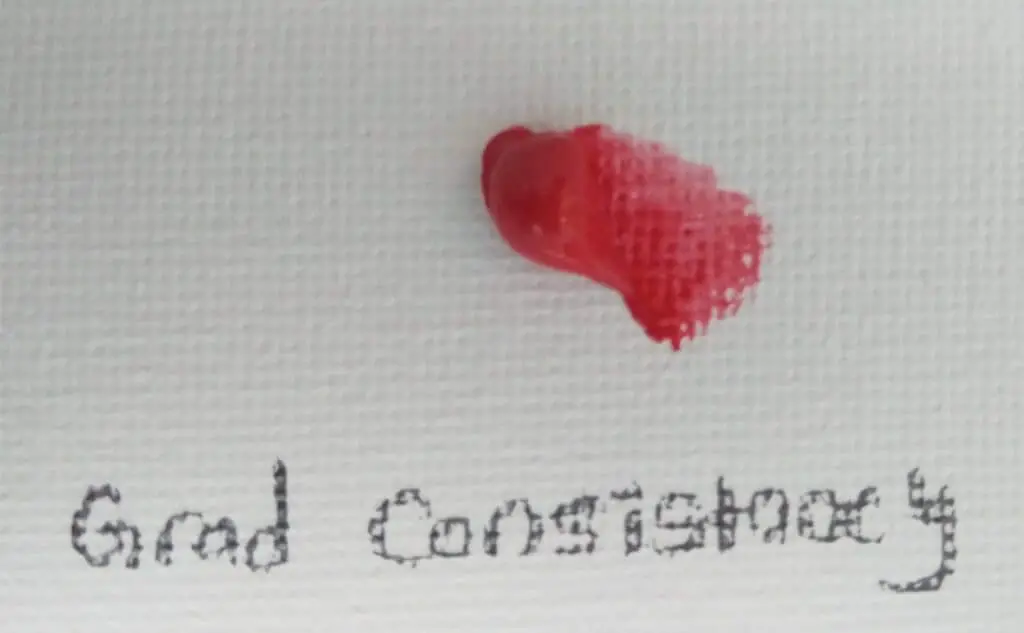
Graduate acrylic has a thin, slightly flowy, and creamy consistency. It is a medium body acrylic paint with medium viscosity. The paint feels very thin. Although it seems like not hold a shape after drying, it held the texture well even after drying. So graduate acrylics are an okay choice to create texture on canvas.
Application
The application of acrylic paint is very smooth. You can apply the paint with water or straight from the tube. As acrylic paint is water-soluble, the application is very easy. The only problem is that when mixed with a small amount of water the paint becomes very thin and transparent.
Therefore the best way to apply Graduate acrylic paint will be to just wet the brush and apply paint. I have written a whole article about using water with acrylic paint. You will find how much water to use and better alternatives to water for thinning.
The following image shows you the effect of thinning the paint with water. The first swatch on the left is painted straight out from the tube. I have gradually increased water with the next consecutive swatches. Although the paint swatches are transparent, they seem to have a good pigment load.
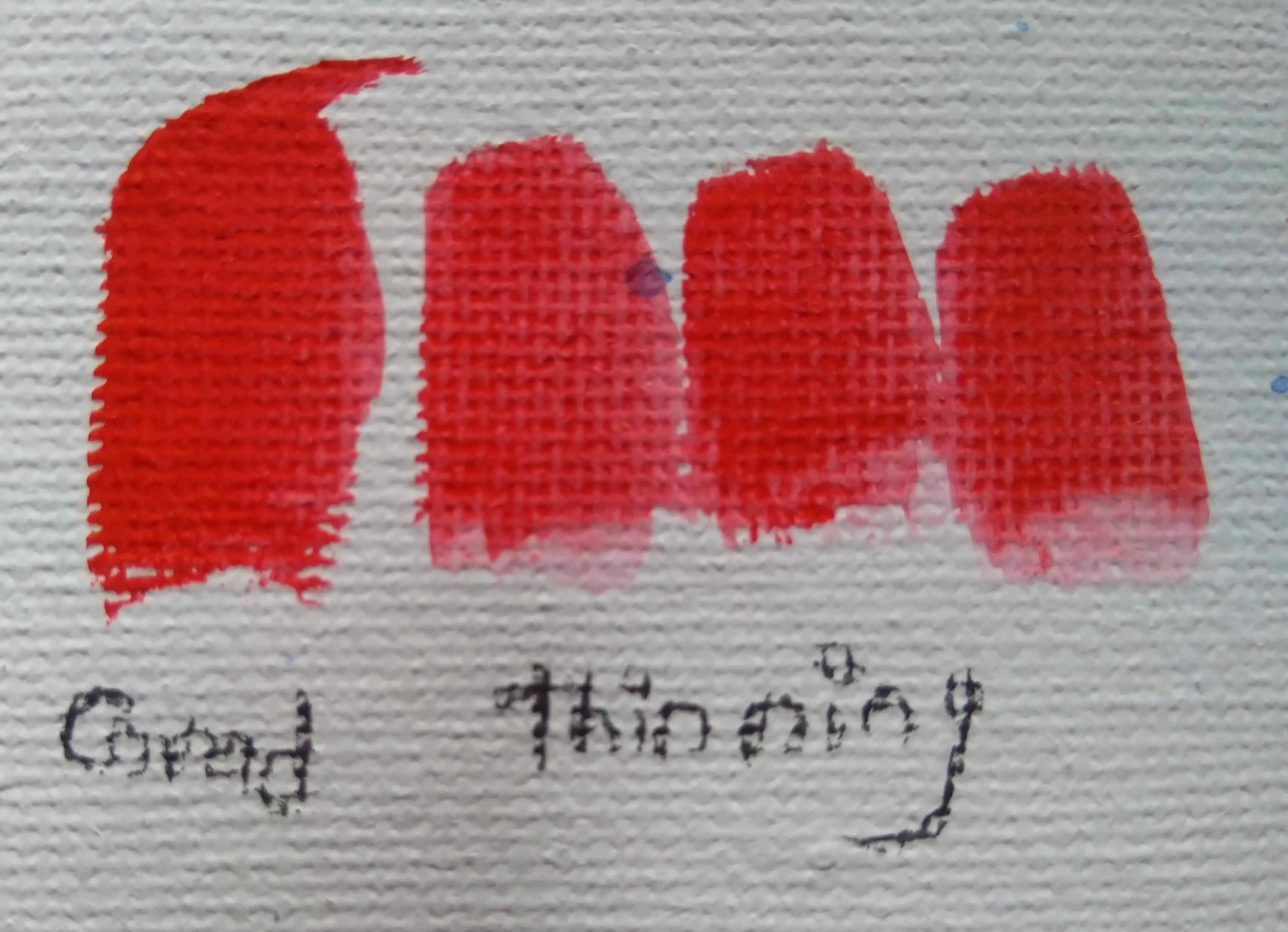
Pigment
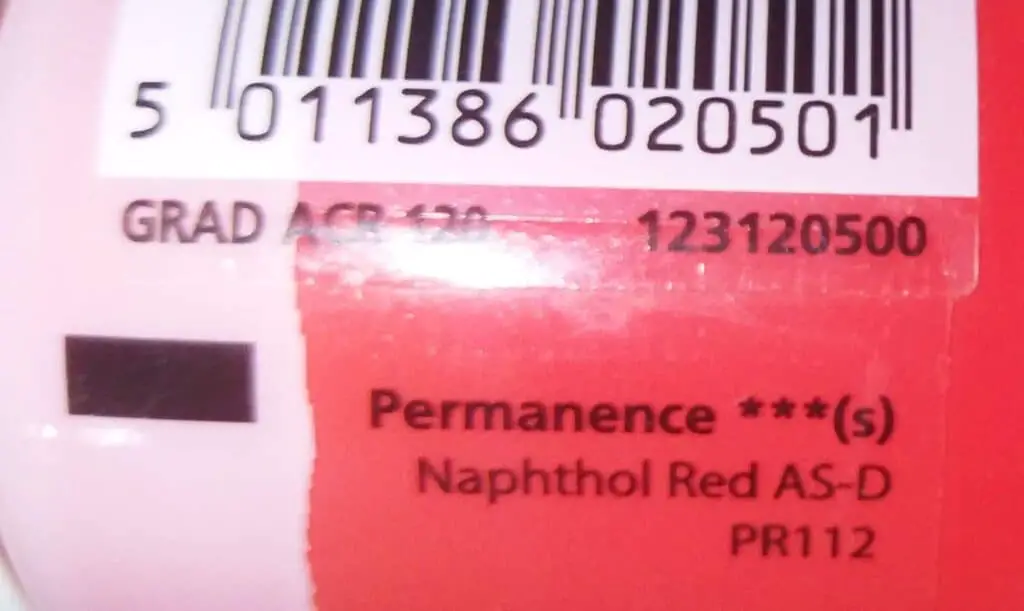
Graduate acrylic paint colors are bright and vibrant as System 3 acrylic paint. The only caveat is the thinness. However, the quality of pigments used is low compared to system 3 paints as most Graduate acrylic paint has a lightfastness rating of 3 stars (normally permanent) and others 4-star lightfastness (permanent).
Graduate acrylic colors have 48 colors which is a large range. However, using a simple color palette will be the best choice for acrylic painting. You will only need yellow, blue, red, brown and white. You can check out more details on the color palette I am using from this link.
The cadmium red color I have used is semi-opaque. But it felt like the pigment load is very low and the paint has more fillers in it (Fillers are an inexpensive way of extending the paint without adding more pigment).
The best paint you can choose is made from a single pigment and not multiple pigments. When you have single pigmented primary colors, you can mix other colors by yourself.
Coverage
Graduate acrylic paint has low coverage. Coverage refers to how well the paint can cover what is underneath. When there is good coverage it is easier to build up layers. Low coverage makes it harder to layer in most cases and you will need to apply several coats of paint where necessary.
We can look at the coverage from two angles. They are total coverage and detailed coverage.
Total coverage
Total coverage refers to how well the paint on top can cover a whole area of paint underneath. To check this I have painted a black square filled with black acrylic paint. After drying, painted the whole square over with Graduate acrylic paint (one coating). The following image shows the results I have got.
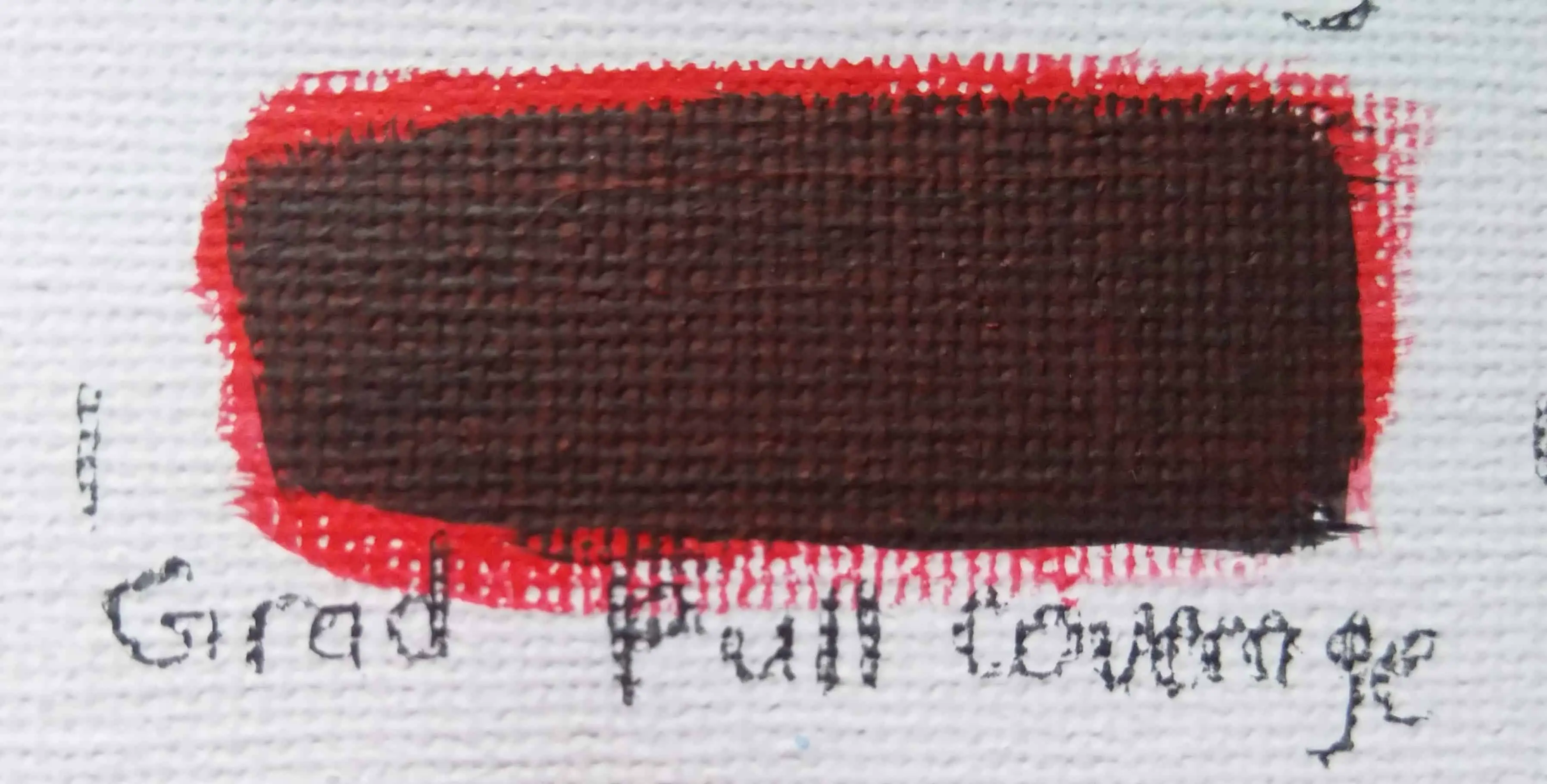
As you can see the paint is very thin and very transparent. the bottom black paint layer is very visible through the cadmium red hue paint layer. You can use Graduate acrylic paints where transparent paint layers are required. Do not use it where you want better coverage.
Detailed coverage
Detailed coverage means how the paint can cover small details underneath. To check this I have painted 3 thin black stripes on the canvas and painted them over with Graduate acrylic paint. Following are the results I have got.
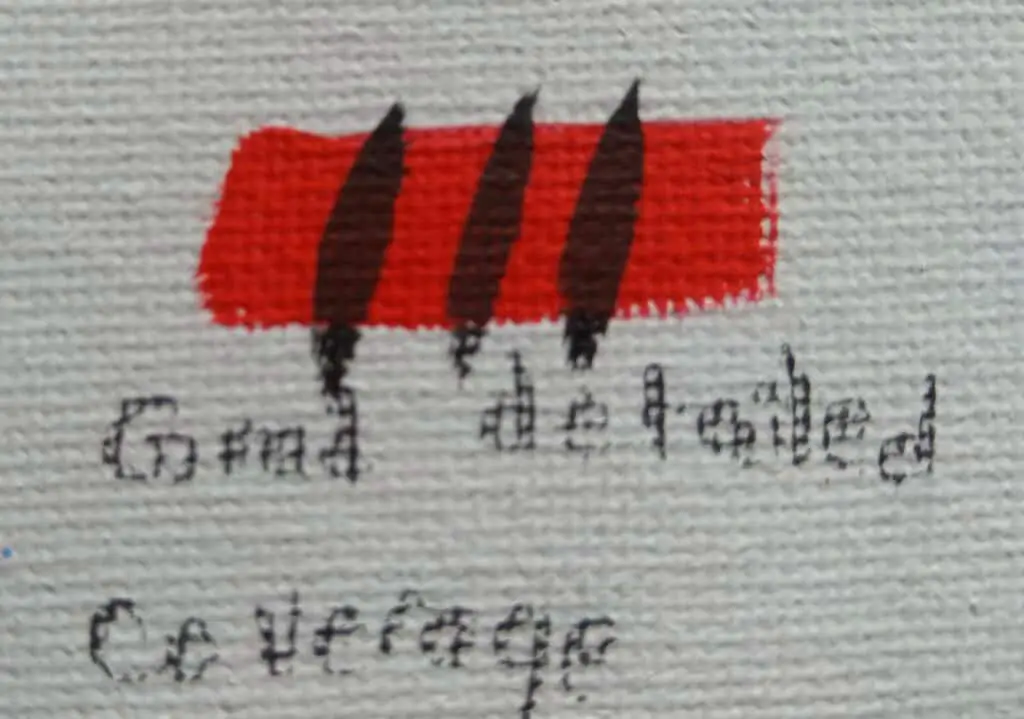
You can see that the detailed coverage of graduate acrylic paint is very low. The black stripes can be seen through the cadmium red hue over it. So graduate acrylic paints are not the best choice for detailed coverage.
Opaque colors may have slightly better coverage but not much. You can mix Graduate acrylic colors with opaque colors from other paint lines such as titanium white from Daler Rowney System 3 acrylic paint. It can increase the coverage of Graduate acrylic paint.
Opacity
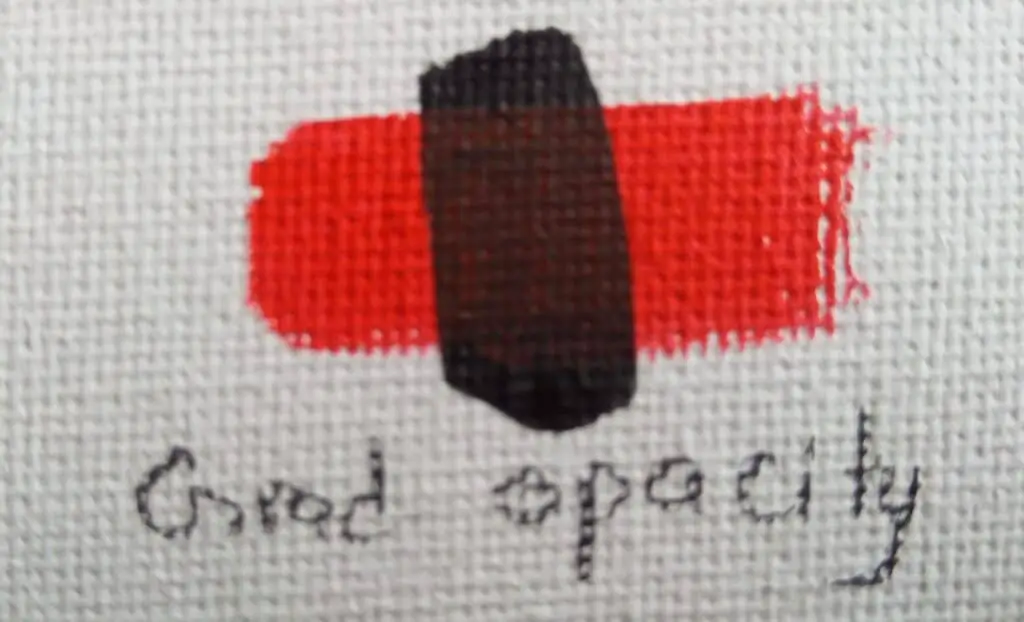
Opacity measures the same thing as coverage. There are 3 categories of opacity which are opaque, semi-opaque, and transparent. When a color is more opaque, it has better coverage ability. There are 10 opaque, 16 semi-opaque, and 22 transparent colors in the Graduate acrylic paint line.
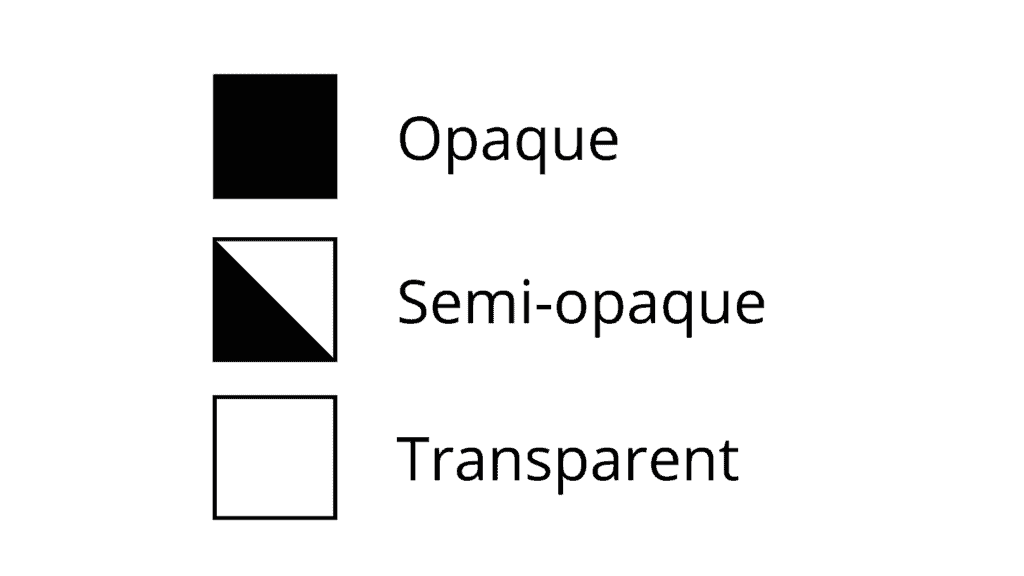
The cadmium red hue color I have used is semi-opaque. The best colors you can choose are single pigmented opaque colors. Single pigmented opaque colors available in Graduate acrylics are Buff Titanium (PW6), Yellow Ochre(PY42), Venetian Red(PR101), Black(PBk7), White (PW 6), Mixing White (PW 5).
Drying qualities
Graduate acrylic colors dry quickly within 10 to 20 minutes or less, depending on the thickness of the paint layer. When the paint dries quickly your can layer on top of each paint layer unlike with oil paints. Oil paints take days and weeks to dry and build up layers.
Drying quickly gives you less time to blend colors. Some artists do not like that. In this case, you can use a slow dry medium from another brand such as Liquitex. Following is the link to view it on Blick Art Materials: Liquitex Fluids Slow-Dri Medium
Slow-dri acrylic medium will increase the open or working time of acrylic paint by 40%, giving it more time to blend colors.
Finishing
Graduate acrylic has a statin finishing like most other acrylic paints but it is more towards a matte finishing. This is in the case of the cadmium red hue colors I chose. The below image will show you the finishing of the Graduate cadmium red hue acrylic color.
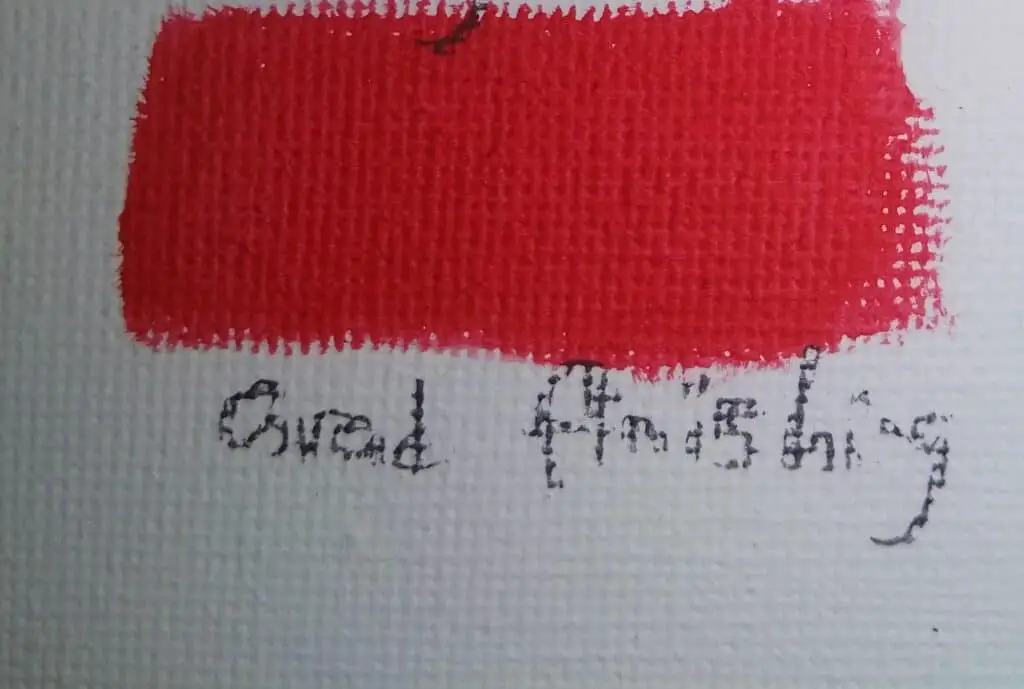
As graduate acrylic paint has less pigment load, the finishing is thin and transparent. However the finishing is not streaky, the paint can be applied evenly on the canvas. You can add a glossy and even finish to the final piece with more saturated colors by varnishing the painting.
Usage
Graduate acrylic paints can be used on many surfaces like most other acrylic paints. It can be used from paper canvas to plastic to metal. But it will best perform and stick on paper, primed board, and canvas.
As graduate acrylics are available in larger sizes (from 120 ml to 2.25 l) for an affordable price you can use this paint to cover large areas. It is made for a beginner and amateur artists.
As these paintings are affordable they will be best for Mixed Media Art, Acrylic Pourings, Gel Press Printing, and Stenciling.
Lightfastness/ Permanence
Although graduate acrylic paints are student-grade paints, they are made from lightfast and permanent pigments. Lightfastness refers to how well paint can withstand any color shift or fading when exposed to sunlight.
Following is the lightfastness or permanent scale used by Daler Rowney acrylic paint.
- 4 stars (****)- Permanent
- 3 stars (***)- Normally permanent
- 2 stars (**)- Moderately permanent
- 1 star (*)- Fugitive
Almost all colors of Graduate acrylic paints have 3 stars lightfastness ratings. 42 colors have a lightfastness rating of 3 meaning the paints are normally permanent. 6 colors have a 4-star rating meaning the colors are permanent.
Cadmium red hue of Graduate acrylic paint has a 3-star lightfastness rating. These paints are also permanent which indicates the artwork done using these acrylic paints can be kept for a long time without any change of color. It is best for artists who look for archival quality paint.
Accessibility
Graduate acrylic paints are available mostly in larger sizes. There are 120ml, 500ml, 1l, 2.25l, and sets. Sets usually have the smaller Graduate acrylic paint tubes. You can only purchase single-color tubes starting from 120 ml size. Also, there are not many size choices.
Smaller sizes can be purchased with a Graduate acrylic introductory set with a 38ml tube each. Graduate acrylic paints are available in most art stores in the US.
However acrylic mediums are not available separately for graduate acrylic. Daler Rowney acrylic mediums are not accessible everywhere. Choose a brand like Liquitex if you need acrylic mediums for graduate acrylic paint.
Price
Graduate acrylic paints are generally affordable, compared to artist-grade acrylic paint. However price of 1 oz of paint differs according to the size of the paint tube. Let’s compare the prices of 1 oz of paint of different sizes acrylic paints. It will help you to pick the paint tube with the best value.
All prices in the below table are the current price at Blick Art Materials.
| Acrylic paint | Size | Price per 1 fl oz (USD) |
| Introductory Set of 10 | 38 ml (1.28 oz) | 2.00 |
| Graduate acrylic single paint tube | 120 ml (4.05 oz) | 1.72 |
| Graduate acrylic single paint bottle | 500 ml (16.90 oz) | 1.10 |
According to the above chart, you can see that you save the best with a 500ml bottle of paint. But most of us may not need that amount of paint. The next best option would be buying a 120 ml single acrylic paint tube. If you want to do some small artwork only the introductory set of 10 would help greatly.
The paint may be slightly overpriced compared to other student-grade acrylic paint brands.
Final thoughts
The Graduate acrylic paint from Daler Rowney is best for beginners and students. It is best to use on canvas, for craft projects, and on paper. The paint does not have satisfactory coverage. It is slightly overpriced compared to other student-grade brands.
It is best to apply to larger areas. The paint is also lightfast and permanent and the artwork will be archival.

